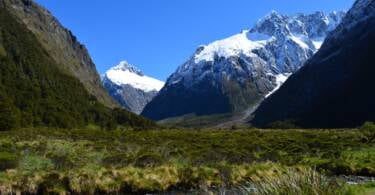The cityscape is a place of microcosmic globalisation, innovation and fear. As the population grows, the city space undeniably extends, encompassing greater landmass.
The cityscape is a place of microcosmic globalisation, innovation and fear. As the population grows, the city space undeniably extends, encompassing greater landmass. Like the age-old question, torturing philosophers and young children alike – ‘which came first, the chicken or the egg?’ – we could also ask – ‘which grows first, the city or the people?’
‘He was as tough and romantic as the city he loved. Behind his black-rimmed glasses was the coiled sexual power of a jungle cat.’
I love this.
New York was his town, and it always would be…’
– Woody Allen, Manhattan
Throughout the modern age, we can consider increasing literary, filmic and musical representations of the city. However, whereas early modern writers and filmmakers tended to present us with the ‘bright lights, big city’ trope, as time moved on, there was a sense of growing anxiety. The cityscape began to dull the perceptions of the population; there were concerns that sensory overstimulation left the city’s inhabitants jaded. After the rush of the technological age, populations became more accustomed to the cityscape. Rather than a people shaping the city, they often defined themselves in relation to the urban space; it became a part of them.
Similarly, artistic modes of thought mirrored this view; city-fever was rife. George Gershwin’s seminal work Rhapsody in Blue is now synonymous with the Manhattan skyline, thanks to Woody Allen’s eponymous film. The clarinet glissando which opens the piece reminds us of Brooklyn accents, hazy summers and smog. It is so famous, in fact that you only need to hear a few seconds of the leering opening in order to recognise the piece. It’s a one-note wonder. Funnily enough, this musical marvel was not scored by Gershwin. The original Clarinet player thought it would be funny to play this extended glissando during one rehearsal. And, boy, did Gershwin love it.
The whole piece screams NYC. The muted trumpets alone do it for me. Their shrill raspiness lends a certain ‘gossipy’ tone to the music; I can’t hear a muted trumpet without thinking of someone called Babette from Queens. When the accompaniment plays, it is swaggering, lazy, drawling; here is a city in summertime, in the height of a dusty heat and a blue moon. Indeed, the piece encapsulates the New York people through ever-shifting musical idioms. What is emphasised is constant movement; as the piano part takes over, it stresses a wholly sporadic mode of expression. When the people move further afield, so must the city expand. As the city expands, so must the population.
And so it has been, a people defining their city and subsequently defining themselves in relation to it. Whilst Gershwin’s piece depicts a more whimsical approach to this binary, there is perhaps a darker side. Paul Auster uses the city as a means in which to fuel his post-modernist approach to literature. Particularly in The New York Trilogy, the city becomes a space of uncertainty and fear. His characters mutually suffer from existential crises which span the subjective to the geographic. Indeed, in City of Glass, the first part of the trilogy, we witness Peter Stillman literally spell out his neuroses using the streets of New York. He connects his inner turmoil to geographic location without a second thought; to him, the two are irrefutably linked.
Perhaps this is his downfall. As Stillman attempts to spell out ‘TOWER OF BABEL’ by walking the Manhattan streets, he quickly begins to lose his mind. Searching for the point in which language initially diversified eventually alienates Stillman from the culture around him; he is unable to fully express what he is searching for or why he is searching for it. Language eventually fails him and he has no choice but to commit suicide.
Such is the city in the works of Auster. He leads us through the packed New York streets, apparently towards a greater meaning, only to cut off from all trains of thought, leaving us deflated. In Auster’s city, there is no individual in the sense that there is no transcendental veracity. As his characters struggle to define themselves, it becomes increasingly obvious that there is no real way in which to do it. Identities merge and overlap until all we are left with is the soupy mass of a city population. Ultimately, each individual becomes the city they feel they have shaped. As they walk the streets, they leave any appearance of individuality behind. They are no-place; they are no-one.
‘Each time he took a walk, he felt as though he were leaving himself behind … On his best walks he was able to feel that he was nowhere. And this, finally was all he ever asked of things: to be nowhere.’
– Paul Auster, City of Glass








